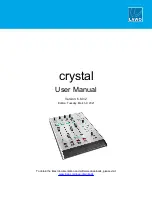
24
1.2 The type of salt
The purer the salt, the better the tide, the more economical the salt chlorinator. This also
extends the lifespan of the chlorinator. The sodium chloride (NaCl) in the salt must be at
least 99.6%. It is best if the salt is dehydrated granular sea salt of nutritional quality.
Attention:
a.
Please do not use rock salt, this may shorten the lifespan of the chlorinator.
b.
Please do not use calcium chloride as salt, only sodium chloride can be used.
c.
Do not use anti-blocking agent (sodium cyanide, also known as YPS, is toxic and
corrosive) salt, this kind of salt can change the colour of the pool surface and
equipment inside.
d.
One can use salt pills for water treatment, but it takes very long time to dissolve in
the water.
1.3 Adding the right amount of salt:
Most swimming pools contain a certain amount of salt, the concentration of salt in the
water strongly depends on the water source. Users can use a portable NaCl tester or a
salinity pen to test the skin and salt concentration of the pool.
TIPS
The normal salt concentration level of the EC series salt chlorinator is 3500 ppm (3.5 kg of
salt per cubic meter of water).
When using the EC series for the first time, add salt to the pool according to the step pen
below:
A.
Use a salt meter to check the original salt concentration in the pool.
B.
Add the correct amount of salt, making sure to add 3.5 kg of salt for each cubic
meter of the pool.
The salt concentration (ppm value) is the number of grams of salt within 1 ton of water. If
the current salt concentration of a 100 m³ pool is 850 ppm (is 850 g in 1 ton of water)
How much salt is needed for the chlorinator to work normally:
The salt needed is (in grams) = amount of water in pool x (normal salt concentration- the
current salt concentration) = 100 x (3500-850) = 265000 grams
Summary of Contents for Hydrolyse EC12
Page 1: ......








































